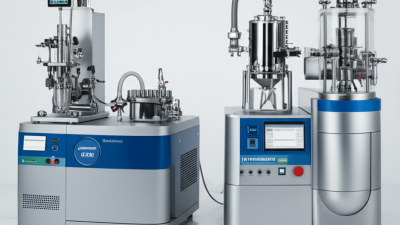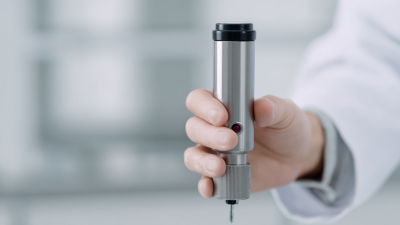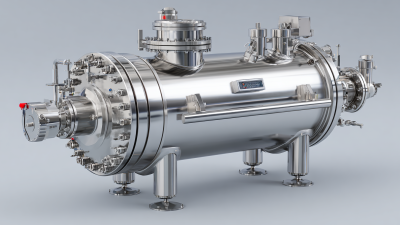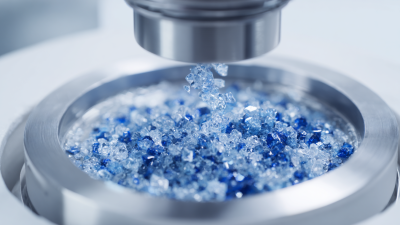So, when it comes to ramping up production efficiency, the food, pharma, and cosmetics industries are really starting to explore some pretty innovative homogenization techniques. They're all about getting better product quality and keeping things consistent. You’ve probably heard of the Supraton Homogenizer — it's pretty popular for making smooth emulsions and dispersions, and it’s been used in tons of different applications. But lately, industry reports are showing that people want more versatile and efficient options. For example, the global market for high-pressure homogenizers is expected to hit around 4 billion USD by 2027, thanks to breakthroughs in nanotechnology and the increasing demand for improved product formulations.

Over here at CAS PETER (HANGZHOU) NANOTECHNOLOGY CO., LTD, we’re focusing on developing and selling high-pressure homogenizers and microfluidizers to meet a whole bunch of different needs across various industries. In this blog, we’ll dive into some alternatives to the Supraton Homogenizer that could potentially boost production efficiency and product quality even further.
Lately, we've seen some pretty big shifts in how production processes, like homogenization, are evolving — thanks to some really innovative tech that boosts both efficiency and product quality. I came across a report from MarketsandMarkets that predicts the global homogenizer market will hit around $1.1 billion by 2025, growing at about a 5.4% CAGR. That kind of growth really shows how the industry is moving towards more advanced equipment, especially to keep up with the skyrocketing demand for high-performance products.
One cool thing to note is how alternatives to traditional homogenizers like the Supraton are gaining traction — for example, high-pressure homogenization systems. These not only do a great job of breaking down particles into smaller sizes but also help save energy, making production a lot more sustainable. There was a recent study in the Journal of Food Engineering that showed these high-pressure machines can cut processing time by up to 25%. That’s a game-changer for industries like dairy and pharmaceuticals, where faster processing can really help with costs.
Plus, tech keeps moving forward. Innovations like ultrasonic homogenization and microfluidization are opening up new possibilities. These methods do a fantastic job of ensuring even dispersion and stable emulsions — which means better texture and consistency, essential for certain formulations. According to some reports, ultrasonic homogenization can boost production speed by over 30%, so manufacturers can respond to market needs much quicker than before.
| Technology Type | Efficiency Improvement (%) | Energy Consumption (kWh) | Typical Applications |
|---|---|---|---|
| Ultrasonic Homogenizer | 30 | 1.5 | Emulsions, Nanoparticles |
| Microfluidic Homogenizer | 40 | 2.0 | Pharmaceuticals, Food Processing |
| High-Pressure Homogenizer | 25 | 3.0 | Dairy Products, Beverages |
| Bean Mill Homogenizer | 20 | 1.2 | Plant-Based Milks, Sauces |
| Centrifugal Homogenizer | 35 | 2.5 | Creams, Dressings |
Homogenization tech is evolving pretty fast these days. Companies like CAS PETER (HANGZHOU) NANOTECHNOLOGY CO., LTD are really pushing the boundaries with new solutions to boost production efficiency. I’ve seen some interesting studies that compare different types of homogenizers—turns out, there are quite a few promising techniques out there for optimizing emulsification, no matter what industry you're looking at. For example, lately, research shows that ultrasonic homogenization can actually beat traditional methods, especially when it comes to making things like vegan frozen desserts from chickpea and mung bean protein isolates. Not only do they come out with better texture and stability, but they also perform way better overall.
On another note, when it comes to designing lattice metamaterials, they’re using multiscale homogenization processes that give some pretty deep insights into how these materials behave. These methods don’t just improve their mechanical properties—they also offer lots of useful data for designing better products. What’s exciting is that these advanced techniques aren’t limited to food; they’re making waves in areas like sustainable infrastructure and renewable energy, too. For instance, some recent evaluations highlight how using nano-additives in biodiesel production can be super beneficial. All things considered, it’s clear that we need to keep reevaluating our homogenization practices. There’s a lot of potential to find ways to make processes more efficient across a range of applications.
Thinking about switching from your usual Supraton Homogenizer to some of the newer, more innovative options? It might seem like a big leap at first, but honestly, the benefits for your production process can be pretty impressive. Sure, the upfront costs can look kinda intimidating — I get it — but when you consider the long-term savings and how much more your output can improve, it often makes a lot of sense. Options like high-pressure or ultrasonic homogenizers can really help you boost product quality and cut down on downtime, which? Well, that’s good for your bottom line.
When you're weighing your choices, don’t forget to think about the total cost of ownership — stuff like maintenance, energy use, and whether the new machine can give you better yields. It’s all about making a smarter, more informed call on what technology fits your needs best.
And here's another thing: different homogenizers can really change how your products turn out. Some might give you better control over things like particle size and distribution, which means a better-quality product overall. So, make sure to compare these features along with costs, to pick the option that really aligns with your goals.
Oh, and seriously, don’t skip the pilot tests before going all-in with a new piece of equipment. Running a test or two in your actual production setting can give you some solid insights into how well it performs and if it’s worth the investment.
So, when companies are looking to boost their production efficiency, they’re starting to explore some pretty interesting alternatives to the usual homogenization methods—stuff like the classic Supraton Homogenizer. I recently came across a case where a biotech firm tried out a new ultrasonic homogenization technique. Not only did it speed up their sample processing, but it also made their emulsions hold together way better, which meant more consistent results during their product development. Definitely a win in their book.
Then there’s this pharmaceutical company that switched to high-pressure homogenization. It turned out to be a smart move because it saved them some costs while still keeping the quality high. The best part? They managed to streamline their workflow and scale up without messing with the delicate molecular structure of sensitive compounds—like those they're extracting from skin tissues for RNA work.
All in all, these examples really show how adopting innovative homogenization tech can help meet the changing needs across different industries.
The world of homogenization tech is changing pretty fast these days, mainly because everyone’s really looking to get more efficient in their production processes. You know, the old-school stuff like the Supraton Homogenizer? It’s great, but it’s starting to show its age—there are better, more modern options now. These new solutions use high-tech materials and smarter automation to get finer particles and better consistency, which, honestly, are super important for making everything from food to meds and cosmetics.
Looking ahead, it seems like everyone’s gonna be moving toward greener, more energy-efficient ways of doing things. Ultrasonic homogenizers and microfluidic devices? They’re becoming pretty popular because they offer tight control and use less energy. Plus, the buzz is all about AI—using artificial intelligence to keep an eye on and fine-tune the process in real time. This could totally change the game for manufacturers, letting them react quickly to what's happening on the line. As these trends unfold, companies that jump on these next-gen tools aren’t just gonna boost their efficiency—they’re also gonna stand out as leaders in sustainability and innovation. It’s an exciting time, for sure!
: The global homogenizer market is projected to reach $1.1 billion by 2025.
High-pressure homogenization systems improve particle size reduction and optimize energy consumption, resulting in a more sustainable production process.
High-pressure homogenizers can reduce processing time by up to 25%.
Processing efficiency is particularly crucial in the dairy and pharmaceuticals industries.
Ultrasonic homogenization and microfluidization provide excellent dispersion and emulsion stability, beneficial for formulations requiring consistent texture and appearance.
The use of ultrasonic homogenization can increase production throughput by over 30%.
Vegan frozen desserts made from chickpea and mung bean protein isolates have shown better functional characteristics and stability using ultrasonic homogenization.
Multiscale homogenization procedures enhance mechanical properties and provide critical data for design evaluation.
Yes, advanced homogenization techniques can lead to innovations in diverse areas such as sustainable infrastructure and renewable energy.
Ongoing assessment is important to identify opportunities for efficiency improvements across various applications.
So, if you're looking to boost your production efficiency, exploring alternatives to the traditional Supraton Homogenizer has become pretty important these days. In this blog, I’ll be diving into some of the coolest new technologies that are really changing the game when it comes to homogenization across different industries. We’ll take a close look at how these other homogenizers stack up against the classic Supraton, with a thorough comparison to see which ones perform better. Plus, I’ll share some insights on costs and benefits—yep, breaking down what switching might mean for your wallet. And to top it all off, there are real-world case studies of companies that’ve successfully switched to these alternatives, so you’ll see that it’s actually doable.
Looking ahead, I’ll also talk about upcoming trends in homogenization tech—what’s on the horizon for making production smoother and more efficient. As CAS PETER (HANGZHOU) NANOTECHNOLOGY CO., LTD continues to lead the way in high-pressure homogenization and microfluidization, knowing about these alternatives can really help industries optimize their processes and get better results. It’s all about staying ahead of the game, right?







